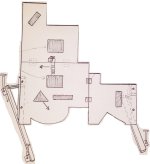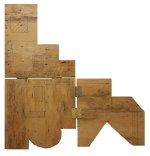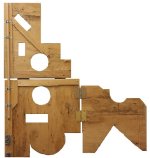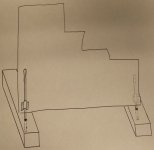Hey folks!
I've been inspired by the design of barricade from Vikings Tactical book on pistol shooting. So, I've decided to make some modifications (make it foldable for ease of transportation in a small car, add a shape of a car tire to the bottom, make a handle from two square holes when the barricade is folded, etc.) and build one for myself from plywood.
What do you think? Would you suggest any improvements/changes to this design? I plan to start working on it this weekend. Looking forward to your thoughts, as always.
Hopefully, using this barricade will help inject some realism into my shooting practice (and make such practice more fun ).
).
I've been inspired by the design of barricade from Vikings Tactical book on pistol shooting. So, I've decided to make some modifications (make it foldable for ease of transportation in a small car, add a shape of a car tire to the bottom, make a handle from two square holes when the barricade is folded, etc.) and build one for myself from plywood.
What do you think? Would you suggest any improvements/changes to this design? I plan to start working on it this weekend. Looking forward to your thoughts, as always.
Hopefully, using this barricade will help inject some realism into my shooting practice (and make such practice more fun
Attachments
Last edited:




